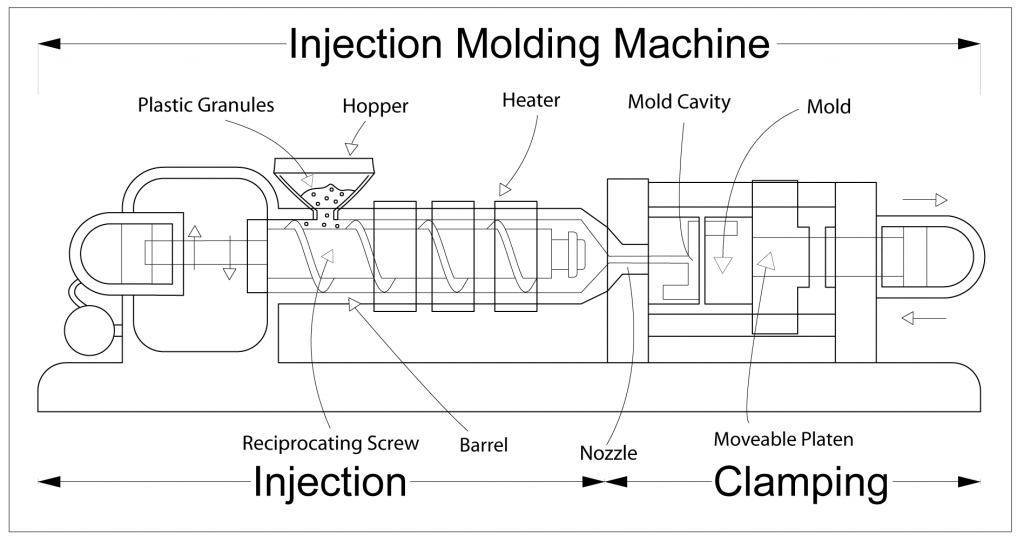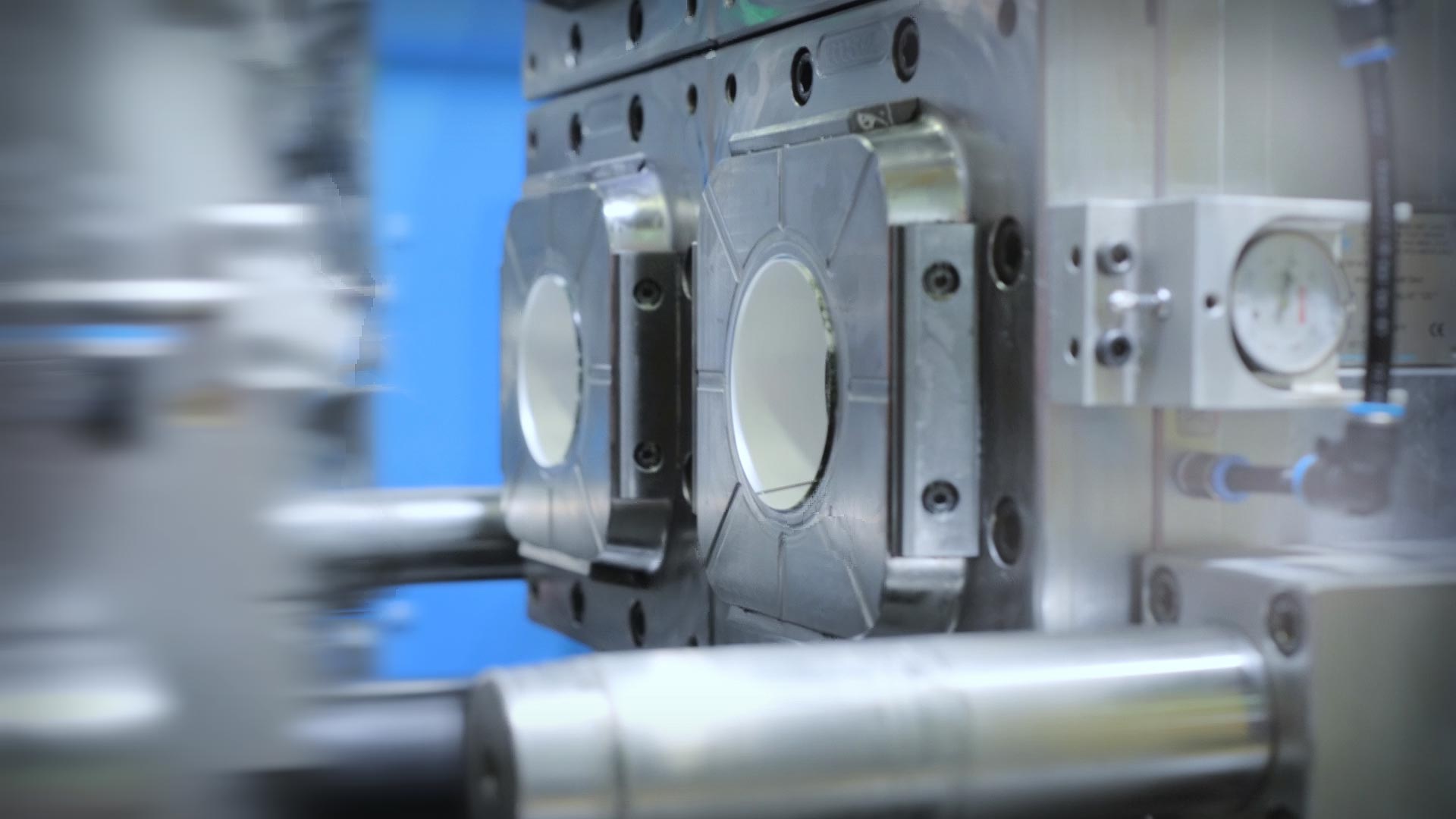Plastic Injection Molding: A Comprehensive Overview to Modern Production Techniques
Plastic Injection Molding: A Comprehensive Overview to Modern Production Techniques
Blog Article
Comprehending the Fundamentals of Plastic Injection Molding Processes
Plastic injection molding functions as a foundation of modern production, offering a methodical strategy to creating complicated components with precision. This process not just includes the basic actions of melting and injecting products into molds but additionally entails a nuanced understanding of various influencing aspects, such as temperature level and pressure. As markets increasingly require effectiveness and high quality, the ins and outs of this methodology come to be more essential. Discovering these vital aspects can expose exactly how even minor modifications can bring about substantial enhancements in production results, increasing inquiries about the potential for advancement in this recognized procedure.
What Is Plastic Injection Molding?
Plastic shot molding is a widely utilized production process that changes polycarbonate and thermosetting materials right into accurate and complex shapes. This strategy is favored for its ability to generate high quantities of similar parts with extraordinary precision, making it an essential method in various markets, including auto, durable goods, and clinical devices.
The procedure includes melting the selected plastic product and infusing it right into a mold under high stress. The mold and mildew, made to the specifications of the desired component, permits the molten plastic to materialize as it cools and strengthens. Once the material has actually hardened, the mold and mildew is opened up, and the ended up component is expelled.
Plastic injection molding provides a number of benefits, consisting of lowered waste, consistency in production, and the ability to incorporate intricate designs that may be testing with other producing approaches. In addition, it supports a wide series of products, each giving one-of-a-kind residential or commercial properties that can be customized for specific applications. As markets continue to introduce, plastic shot molding remains at the forefront, allowing the advancement of sophisticated products that meet evolving consumer needs.
The Shot Molding Refine
The injection molding process is a sophisticated technique that entails numerous vital phases to create top notch plastic elements. Plastic pellets are fed right into a heated barrel where they are melted right into a thick liquid. This molten plastic is then infused under high pressure into a precision-engineered mold and mildew, which forms the material into the wanted type.
Once the mold and mildew is loaded, the plastic is enabled to solidify and cool, taking the shape of the mold cavity. Cooling time is critical, as it affects the cycle time and the final residential properties of the molded part. After adequate air conditioning, the mold opens up, and the completed component is expelled utilizing ejector pins.

Products Made Use Of in Shot Molding
Numerous materials can be made use of in the shot molding process, each offering unique residential properties that deal with details applications. One of the most generally made use of products consist of thermoplastics, thermosetting plastics, and elastomers.

Thermosetting plastics, like epoxy and phenolic materials, undertake a chemical modification throughout the curing process, causing a rigid, inflexible framework. These products are excellent for applications requiring high warm resistance and structural stability, often utilized in electric insulators and automotive parts.
Elastomers, including silicone and rubber-based materials, supply adaptability and resilience. Their distinct buildings make them suitable for applications that demand elasticity, such as gaskets and seals.
In addition, specialized materials like bio-based plastics and composites are acquiring traction for their environmental advantages and enhanced efficiency qualities, expanding the range of shot molding applications in numerous sectors. Understanding the homes of these products is essential for choosing the proper kind for details tasks.
Benefits of Shot Molding
Injection molding stands apart as an extremely effective manufacturing process that offers numerous advantages for generating intricate get rid of accuracy. One of the most significant advantages is the capacity to produce elaborate designs that would be impossible or challenging to achieve with various other techniques (Plastic Injection Molding). The process allows for limited tolerances and thorough attributes, making certain top notch elements
Additionally, shot molding is understood for its fast production capacities, making it a suitable option for high-volume manufacturing. As soon as the mold is created, components can be produced promptly, minimizing lead times and raising general efficiency. This performance not just decreases manufacturing prices however likewise offers an one-upmanship on the market.
The versatility of products used in shot molding further improves its appeal. A variety of thermoplastics and thermosetting polymers can be utilized, permitting over here makers to pick materials that ideal meet their certain requirements, including heat, strength, and versatility resistance.
In addition, the procedure lessens waste, as excess product can typically important site be reused and recycled. This sustainability aspect adds to a minimized ecological impact, making injection molding an accountable production selection. Overall, the advantages of injection molding make it a favored approach for several industries.
Elements Impacting Item Top Quality
While countless factors can influence product quality in injection molding, comprehending these components is important for attaining optimum outcomes. Trick facets consist of product option, refining criteria, and mold and mildew design.
Material option plays a vital role, as different polymers exhibit unique buildings that influence flowability, toughness, and thermal security. Insufficient product option can result in problems such as warping or incomplete dental filling.
Handling specifications, including pressure, cycle, and temperature level time, have to be thoroughly controlled. Variants in these setups can result in inconsistencies partly measurements and surface area finish. As an example, exceedingly heats may create deterioration of the polymer, while inadequate stress can lead to short shots.
Mold layout is just as vital, as it figures out the flow of the molten plastic and the cooling procedure. Improperly developed mold and mildews may bring about unequal cooling prices, resulting in dimensional mistakes and residual anxieties.

Final Thought
Finally, plastic shot molding acts as a crucial manufacturing process that enables the efficient production of high-quality components. Proficiency of the shot molding procedure, including the understanding of materials and the influence of numerous variables on item high quality, is necessary for accomplishing ideal results. The benefits of this approach, such as cost-effectiveness and style versatility, further emphasize its value throughout multiple sectors, solidifying its standing as a recommended option for high-volume production.
Plastic shot molding offers as a foundation of modern production, supplying a methodical approach to generating complicated components with accuracy.Plastic injection molding offers numerous advantages, consisting of minimized waste, consistency in manufacturing, and the ability to incorporate complex designs that might be challenging with various other producing methods (Plastic Injection Molding). As sectors continue to introduce, plastic injection molding continues to be at the forefront, making it possible for the advancement of innovative products that fulfill progressing customer demands
The shot molding procedure is a sophisticated strategy that involves numerous key phases to produce high-grade plastic elements.In verdict, plastic injection molding offers as a critical manufacturing procedure that enables the reliable manufacturing of premium parts.
Report this page